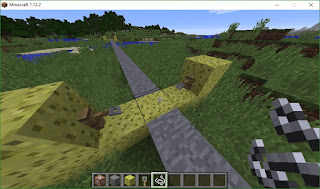Just A Click Away
Something I really enjoy about google and especially about the internet is that you can easily find where words or names come from. For example, I can go on google search for "Monday" click the Wikipedia post and in the first paragraph I'm already told that Monday is derived from the Old English "Mōnandæg" and Middle English "Monenday". This was translated from the Latin "dies lunae" which means "day of the moon". You can go through every day of the week and you will find something interesting.
TUESDAY This day is derived from the Old English "Tiwesdæg" and the Middle English "Tewesday". This literally means "Tiw's Day". Tiw is also known as Tiy which is a Norse god.
WEDNESDAY Again derived from the Old English "Wōdnesdæg" and the Middle English "Wednesdei". This means "day of Woden". Odin is known as Woden in Old English.
THURSDAY This one is derived from the Old English "Þūnresdæg" and the Middle English "Thuresday", which means Thor's day.
FRIDAY Friday is derived from the Old English "Frīġedæġ" and it means "day of Frige" which associates the Old English goddess Frigg with the Roman goddess Venus.
SATURDAY Coming from Latin "Sāturni diēs" meaning "Saturn's Day" devoted to the goddess Saturn.
SUNDAY The last day of the week is named after the sun. Actually after the god of the sun. The god sol.
WEDNESDAY Again derived from the Old English "Wōdnesdæg" and the Middle English "Wednesdei". This means "day of Woden". Odin is known as Woden in Old English.
THURSDAY This one is derived from the Old English "Þūnresdæg" and the Middle English "Thuresday", which means Thor's day.
FRIDAY Friday is derived from the Old English "Frīġedæġ" and it means "day of Frige" which associates the Old English goddess Frigg with the Roman goddess Venus.
SATURDAY Coming from Latin "Sāturni diēs" meaning "Saturn's Day" devoted to the goddess Saturn.
SUNDAY The last day of the week is named after the sun. Actually after the god of the sun. The god sol.
Notice Something?
Did you notice something? Every day has been devoted to a god. When working in ritualism or when doing magic we can use these associated gods to use their energies to increase the intensity and improve the chance of our magic projects.
Try It With Your Language
I did this with the German names before and I never did it with the English names. The result is fascinating. The respective gods the names were derived from actually depend on the language and its evolution. As you just read Wednesday came from a day of Odin however if you look at the Italian name for Wednesday, for example, it has been derived from the god Merkur instead.
Using This Information
To use this information we need to know, which god is associated with which day and what these gods are associated with. For example Sol the sun god is associated with vitality and drive and more. This means if you want to make some ritual that is supposed to prepare you for some upcoming event and need motivation you should most likely do this on Sunday.
Here are some gods and some brainstormed words that are associated with them.
SOL
Vitality, inner being, inner drive
LUNA
Feelings, expressive fantasy, dreams, wishes, desires
MERKUR
Ability to learn, mind or wit, communication ability, understanding, making things understandable, spiritual swiftness
VENUS
Aesthetic sensibility, art, well being, enjoy, nice things, pure luck
MARS
Energy will drive, inner drive, fighting spirit, courage, ability to get through arguments, assertion ability
JUPITER
Luck, wealth, prosperity, growth
MONDAY
is associated with the goddess Luna.
Femininity, intuition, feeling, sensitivity, dreams, strength to give birth, receiving, spawning, dissolution, change, volatility, rhythm, cycling knowledge, emotional synthesis, feeling of structure;
TUESDAY
is associated with the god Mars.
Impetus (Dynamic), self-assertion, sexuality, zeal, fight, contest, aggression, courage, self-defense, fight for structure;
WEDNESDAY
is associated with the god Merkur.
Intellect, language, communication, the art of healing, cunning, finesse, thievery, business sense, noticing structures;
THURSDAY
is associated with the god Jupiter.
Overview, abundance, wealth, overflow, religion, generosity, consecration, ethic, extent, growth, increasing structures;
FRIDAY
is associated with the goddess Venus
Harmony, connection, love, erotic, beauty, art, romantic, flair, harmonizing structures;
SATURDAY
is associated with the god Saturn
Restriction, concentration, hardness, inauguration, concrete, grounding, durability, wisdom, attention to detail, illness, death, time, Chronos, enforcing structure;
SUNDAY
is associated with the god Sol
Vitality, ratio, conscious, centricity, potency, giving, creating, linear knowledge, intellectual analysis, giving structure;
More Than Just For Rituals
These don't have to be used for rituals only. Technically you can use this information to restructure your life accordingly. It probably won't hurt if you go with the flow so to speak. I haven't tried myself but in my conversation with my "teacher" I mentioned this idea and there was an agreement that this would definitely be possible and would probably improve life. Though it's questionable if the outcome is worth the structure and input. So whether or not you want to try it I'll leave it to you.






